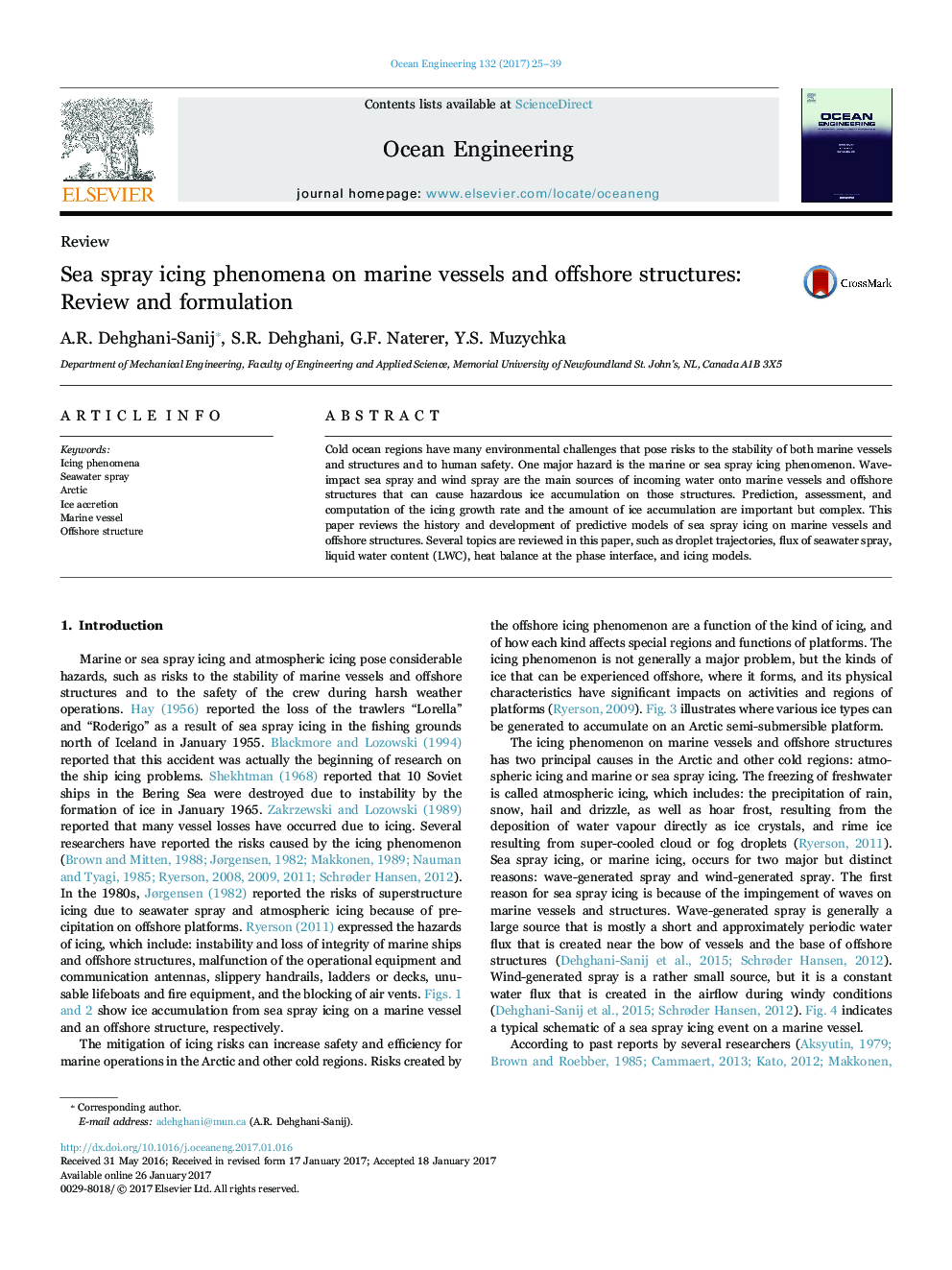| Article ID | Journal | Published Year | Pages | File Type |
|---|---|---|---|---|
| 5474574 | Ocean Engineering | 2017 | 15 Pages |
Abstract
Cold ocean regions have many environmental challenges that pose risks to the stability of both marine vessels and structures and to human safety. One major hazard is the marine or sea spray icing phenomenon. Wave-impact sea spray and wind spray are the main sources of incoming water onto marine vessels and offshore structures that can cause hazardous ice accumulation on those structures. Prediction, assessment, and computation of the icing growth rate and the amount of ice accumulation are important but complex. This paper reviews the history and development of predictive models of sea spray icing on marine vessels and offshore structures. Several topics are reviewed in this paper, such as droplet trajectories, flux of seawater spray, liquid water content (LWC), heat balance at the phase interface, and icing models.
Related Topics
Physical Sciences and Engineering
Engineering
Ocean Engineering
Authors
A.R. Dehghani-Sanij, S.R. Dehghani, G.F. Naterer, Y.S. Muzychka,
